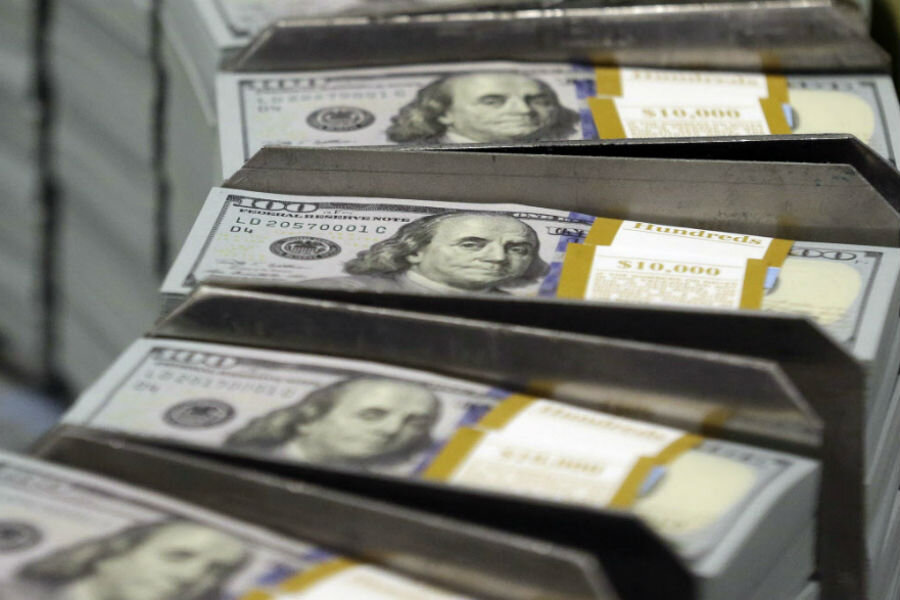Flush with tax refund cash? Proceed with caution.
Loading...
People who don’t have much money during the rest of the year can become big targets during tax refund season.
For those living paycheck to paycheck, tax refunds — which average around $3,000 — may be the largest chunk of unobligated cash they see all year. Retailers hope to get some of that money, but so do debt collectors, buy-here-pay-here car lots and purveyors of interest-free loans that come with fat fees. People flush with cash need to proceed with caution.
Paying old debts
Collectors step up calls and mailings during tax season because they know more people “will have some extra cash to address past problems,” says Michael Bovee, president of debt settlement company Consumer Recovery Network in Spokane, Washington.
But people who are ready to settle old debts also can turn the situation to their advantage, Bovee notes.
“Use tax time as leverage [by telling] a debt collector the offer you are making is as good as it gets, and it could be another year before you have anything extra in your budget,” he says.
Many old debts have been sold to collectors for pennies on the dollar, which people may be able to settle for 20% to 50% of the original amount, Bovee says. That’s the good news. The bad is that paying old debts typically won’t help the credit scores most lenders use and could cause other collectors to come out of the woodwork.
“Settling often means updates to your credit reports, and that can bring other debts to the surface that had gone quiet,” Bovee says.
If your debt troubles are too big to solve with a single refund, you may still have a good use for that check: filing for bankruptcy. Filing a Chapter 7 bankruptcy costs $335, while attorneys fees often range from $1,200 to $2,500 depending on location and the complexity of your case, according to self-help legal site Nolo.
Shopping at buy-here-pay-here car lots
The pitch is tempting: Use your refund as a down payment to replace your old, unreliable car — regardless of how bad (or nonexistent) your credit may be. Unfortunately, you may be replacing one junker with another, and not for long.
The Better Business Bureau warns that buy-here-pay-here lots often hawk older, high-mileage cars, typically with steep markups and high interest rates. The payments can be so big that borrowers fall behind, which allows the dealerships to seize and resell the vehicles — sometimes over and over. (Borrowers are typically required to make weekly payments at the dealership, and many cars are equipped with remote switches that disable the vehicle if the borrower doesn’t pay on time.)
People with bruised or nonexistent credit shouldn’t assume buy-here-pay-here lots are their only option. Credit unions and regular dealerships are increasingly willing to offer auto loans for subprime customers. In addition, more than 150 nonprofits affiliated with Working Cars for Working Families offer low-interest loans, matching funds for down payments and even free cars for those in need.
Borrowing against a tax refund
Several years ago, regulators put the kibosh on tax refund loans that charged exorbitant interest rates. The newest incarnation — the “interest-free tax refund loan” offered by tax preparation services — may not be as benign as it seems.
People typically have to pay tax preparation fees to get the loans for a portion of their refunds. Those fees — for services they might not pay for except to get the refund loan — can represent a sizable chunk of the loan. A $200 fee, for example, represents an annual percentage rate equivalent to 480% on a one-month $500 loan. If the loan were $1,000, the APR would be a still-sizable 240%.
Many taxpayers can avoid paying anything for tax preparation by using the IRS’ Free File options. Free tax software is available for people who earn less than $64,000, while those who earn more can use free fillable forms that check their math.
For those who need cash fast, credit unions offer a payday alternative loan, which are small loans with a maximum annual percentage rate of 28% and application fees capped at $20. Borrowers can pay off the loan when their refund arrives.
The best use of a refund for many people, though, is to save at least some of it. Even a few hundred dollars in emergency funds can be enough to weather small financial shocks, break the paycheck-to-paycheck cycle and start down the path to a healthier financial life.
Liz Weston is a certified financial planner and columnist at NerdWallet, a personal finance website, and author of “Your Credit Score.” Email:lweston@nerdwallet.com. Twitter: @lizweston.
This article was written by NerdWallet and was originally published by The Associated Press.







